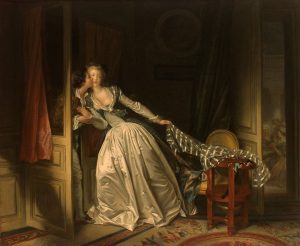angry children
Rococo – gloss of the XVIII century
 Rococo is called the most frivolous and thoughtless of all styles in art. Why then is rococo so significant for Russian visual culture? Why does the definition of the word “Rococo” sound so exotic for our ear – “rococar”? What is the main difference between rococo and baroque, which people of little knowledge often confuse? Finally, why is rococo the direct and immediate ancestor of modern glossy culture? All of this will be discussed below.
Rococo is called the most frivolous and thoughtless of all styles in art. Why then is rococo so significant for Russian visual culture? Why does the definition of the word “Rococo” sound so exotic for our ear – “rococar”? What is the main difference between rococo and baroque, which people of little knowledge often confuse? Finally, why is rococo the direct and immediate ancestor of modern glossy culture? All of this will be discussed below.
Rococo was born in France of the eighteenth century, although the name itself would legitimize only the next century, the nineteenth.
The style got its name from the French word rocaille – shell or sink. Since ancient times, artificial grottoes and bowls of fountains have been decorated with shells, and later, ornaments repeating the twisted, rounded outlines of sinks began to be actively used in the interior design. By the XVIII century, interest in them only grew. Continue reading
Without red sad palette. Color as a symbol in painting
 It is impossible not to notice. He is one of the most preferred and expressive. He – the first in the history of art, not to mention the chromatic scale. He attracted attention to himself since ancient times: and because these are the properties of his nature and of human nature; and because it is associated with such vital concepts as blood and fire. Having absorbed natural meanings, red does not part with them throughout the entire history of mankind.
It is impossible not to notice. He is one of the most preferred and expressive. He – the first in the history of art, not to mention the chromatic scale. He attracted attention to himself since ancient times: and because these are the properties of his nature and of human nature; and because it is associated with such vital concepts as blood and fire. Having absorbed natural meanings, red does not part with them throughout the entire history of mankind.
Ever since antiquity, red has been expressing mostly positive values, but it is also not necessary to discount the coded signals of danger and pain coded in it.
For example, in ancient Egypt, red absorbed the qualities of an uninhabited and barren land and therefore became the color of evil. It is for this reason that Seth, the brother and murderer of Osiris, was painted with red ocher. The same color was used to write words that carried unkind omens. Continue reading
ART-TALK: DIMA MIKITENKO
 We continue a series of author interviews from representatives of the newly inspired team of the Odessa Art Museum: the curator Masha Zeloleva and PR-shchika Hera Grudeva. As part of the project, our heroes, who are directly part of the Ukrainian art sphere, share their thoughts on contemporary art, its role in Ukrainian society and the iconic works of the Odessa Art Museum. This time Masha Zeloeva spoke with artist Dima Mykytenko, who in his works combines arbitrary forms with graphic elements, creating his own visual poetry. Continue reading
We continue a series of author interviews from representatives of the newly inspired team of the Odessa Art Museum: the curator Masha Zeloleva and PR-shchika Hera Grudeva. As part of the project, our heroes, who are directly part of the Ukrainian art sphere, share their thoughts on contemporary art, its role in Ukrainian society and the iconic works of the Odessa Art Museum. This time Masha Zeloeva spoke with artist Dima Mykytenko, who in his works combines arbitrary forms with graphic elements, creating his own visual poetry. Continue reading




